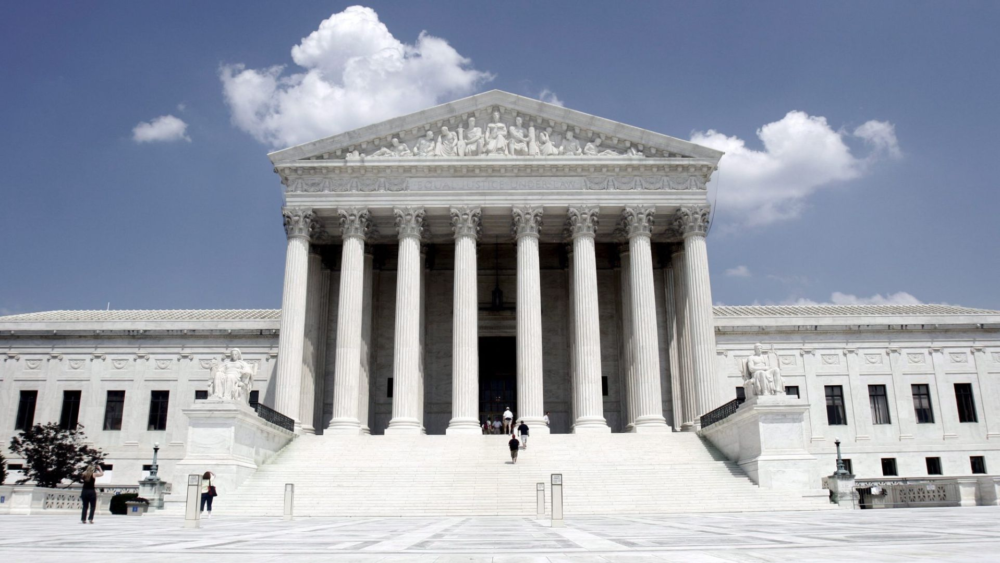Why is the USA still practicing punishment recognized in 142 countries around the world – including all other Western cultural countries – as a humanistic divergent human rights relic? Is this part of American culture or just punishment for shedding innocent blood?
The United States is 8th in the world in terms of the number of executions of convicted persons. According to Amnesty International, in 2017, for the second time in a row, the US dropped out of the top five countries executing the death penalty. In the previous year, more executions were carried out in China, Iran, Saudi Arabia, Iraq, Pakistan, Egypt, and Somalia. The number of Americans in favor of maintaining the death penalty has dropped significantly since 1996. Recently, however, there has been a slight increase in support.
According to 2018 research from Pew Research Center – 54 percent of Americans support the death penalty. It’s still more than half! However, in 1996, 78 percent of the US population supported the main penalty, while in 2016, 49 percent of the country’s population was similar.
An important reason for support of the death penalty is the belief in characteristic individualism as the central value of the American way of life. The basis of this individuality is the responsibility of the individual. The death penalty is seen as a consequence – the result – of actions just like passing an exam is a consequence of hard work and when failed – laziness or lack of dedication to the right amount of time. Everyone has their own chance and decides how it will be used.
Well-known supporters of the death penalty in the USA were, among others George W. Bush, Bill Clinton, John F. Kennedy (authorized the latest federal and military executions), Ronald Reagan (he supported as president, as governor of California, he gave permission to execute one), George H.W. Bush or Clint Eastwood.
However, those who strongly opposed the death penalty, included Jimmy Carter, Clarence Darrow, Susan Collins, Ted Kennedy, and George Ryan. Ryan introduced a moratorium as Illinois Governor and pardoned all convicts against the death penalty.
Opponents argue that the 8th amendment to the United States Constitution prohibits the use of “cruel and unusual” punishment, and they consider the death penalty to be such. On the other hand, supporters point out that the fifth and the 14th amendment proclaim that no one may be deprived of life, freedom, or property without proper administration of justice, which they interpret as consenting to take life in the majesty of the law, but subject to the observance of court procedures.
Most Americans no longer consider the death penalty a deterrent to potential criminals. A 2015 study by Pew found that about 60 percent of Americans do not think that the use of a capital penalty would deter criminals from committing the most serious crimes.
A large proportion of Americans also fear the risk of executing the death penalty on an innocent person. Currently, over 2,500 prisoners are awaiting the death penalty in American prisons.
Until 2005, the USA was the only democratic country where the law allowed the condemnation and execution of death sentences on children (in some states). The last such sentence was carried out in Texas in 2003 on a man who committed a murder at the age of 17. However, in March 2005, the same US Supreme Court finally declared the use of the death penalty against persons under the age of 18 unconstitutional. Nowadays, adjudication of the death penalty in cases of persons under 16 years of age at the time of committing a crime does not happen. The youngest documented case was ten-year-old James Arcene (Arkansas, 1885).
The hero of the novel Green Mile by Stephen King, black and huge John Coffey, is one of the most liked characters in American modern literature. He was sentenced to death for the murder of nine-year-old white twins – wrongly. Few people know, however, that King created this character from real events, which are much more terrible than Coffey’s horror. George Stinney, 14, was the son of a miller. He measured less than 1.60 meters and was an emaciated child, calm, taciturn, and helpful. That’s how his neighbors described him. He lived in the town of Alcolu in South Carolina – on the side of the railroad tracks where only the poor, black community lived. It is not known whether he knew by sight Mary Ema Thames and her three-year-old cousin June Binnecker – smiling blondes from so-called good (of course) white houses. On March 23, 1944, the sisters took their bikes and went on one of their trips. They loved looking for new plants and spending time away from buildings. That day they did it for the last time. The next day, their son, 15-year-old Francis Batson, found their bodies. The girls were undressed, raped, beaten to death with a wooden stick, and abandoned near the tracks. And here begin the hypotheses that have never been properly tested. The testimony of white children caused George Stinney to be sentenced to death. Seven-year-old Sadie Duke, a friend of the murdered, confessed that Stinney one day interrupted their fun when they ventured into areas inhabited by the black community. He kicked the bike, shouting that they should leave, otherwise they would regret it and that if he met them again, he would kill them. No one has verified that the girl is telling the truth. The case attracted media from around the country, becoming a political issue – the white word against the black word. On July 16, 1944, the death sentence was carried out.
In the discussion of the death penalty, this argument always electrifies: what if the perpetrator is innocent? Court mistakes are not uncommon – in the United States 69 people sentenced to death were acquitted in 25 years. The problem of executing innocent people is not limited to the United States. In 2006, Hassan Mohammed Mtepeka was released from death row in Tanzania. In 2004 he was sentenced to death for the rape and murder of his half-sister. The Court of Appeal found that circumstantial evidence on the basis of which he was convicted did not prejudge his guilt. In Jamaica, Carl McHargh was released from death row in June 2006 after an appeal court ruled that he was innocent.
After the media disclosed many scandalous rulings, congressmen asked the Death Penalty Information Center for a report on erroneous sentences. It turned out to be alarming. Over the past 25 years, over 250 convicts for murder, including 69 to death, have been cleared of all charges. Most acquittals did not occur as a result of appeal procedures, but thanks to the inquisitiveness of journalists, hired detectives, and the use of the latest scientific achievements, especially genetic material analysis.
How is it possible that in a country with the largest army of lawyers, possessing the most modern forensic techniques, there are so many judicial mistakes? The team report of prof. Samuel Gross shows that uncritical treatment of witness testimonies is the most common cause of judicial errors: “Under pressure from public opinion, investigating officers strive to capture the perpetrators of the crime as soon as possible. So they interpret any evidence, even circumstantial evidence and words to the detriment of the suspect”. Meanwhile, in the case of sexual killings as much as 25 percent of detained first suspects turn out to be innocent. Most are released during the investigation, when further evidence, especially DNA analysis, precludes their involvement in the crime. Some, however, end up in the courtroom. And there they fall victim to another cause of judicial errors – the incompetence of lawyers.
In 1950, Timothy Evans, a resident of London accused of murdering his wife and daughter, was sentenced to death and hanged. The verdict was quite enthusiastic, but three years later it was discovered that a neighborly serial killer John Christie was guilty. In 1966, the authorities pardoned and vindicated Evans, but the only thing they could do was to transfer his ashes with honors from the prison cemetery to the church.
The death penalty is one of the oldest punishments known to man. The first legislation known to humanity providing for its application dates back to the 18th century BC. and Hammurabi’s legislative activity in Babylonia, who foresaw this penalty for 25 different crimes. Also in Europe, since the formation of specific social groups, it has been a widely used punishment. In today’s US territories, historically the first death sentence was the execution of the British army captain Georg Kendall in 1607 or 1608. It should be noted, however, that due to the arbitrary use of this punishment by the Empire, 13 founding colonies almost together with the adoption. The Constitution adopted the Charter of Rights, which significantly reduced the use of the death penalty (I mean the V and VIII amendments to the Constitution). Based on Article. 6 of the International Covenant on Civil and Political Rights (of which the US is a party) the death penalty in the US does not apply to pregnant women.
Pursuant to the rulings of the Supreme Court Atkins v. Virginia and Ford v. Wainwright, the death penalty in the USA cannot also be imposed on persons who were mentally ill or severely impaired at the time of committing the act, but it was assumed that the perpetrator’s IQ cannot to be larger than 70. Separately, one should also mention a fairly recent ruling in the case of Panetti v. Quarterman from 2007, in which the Supreme Court decided that the death penalty could not be imposed on someone who due to illness (the convict had been ill for many years schizophrenia) does not understand the reasons for the execution, although he is aware that he has committed a crime (the convict killed his in-laws). At that time, there was also a statement that someone was “too sick to be punished with death.” As part of this issue, however, we must mention the Supreme Court’s ruling in the Penry v. Lynaugh case. The court stated that the VIII amendment does not violate the death sentence imposed on the mentally handicapped, but only slightly, which de facto means that the death penalty is decided in these cases by examinations and a medical commission.
According to Freedman, nearly 70% of death sentences imposed in criminal proceedings are then converted into long-term prison, including less than 50% of sentences in the appeal procedure. However, even maintaining the death penalty in appeal proceedings is not synonymous with immediate execution. On average, convicts are awaiting execution for over 10 years. This makes it possible to avoid its actual implementation, but it is all about taking legal steps (of a different nature).
The execution of everyone sentenced to death is individual. Before executing the death penalty, the authorized body must issue so-called order (authorization) to execute the judgment already ordered (execution warrant). Individual legal orders provide for additional reservations (e.g. in Utah, the day of execution may not be Sunday, Monday and non-working days, in Texas it can only be: Tuesday, Wednesday, and Thursday). The signed order obliges to enforcement of the sentence – usually within 60 days. The death order may also be suspended (stay of execution).
In the US, you can go to death row not only for murder. In some states, you may be sentenced to death for rape with particular cruelty to persons under the age of 13. Other offenses include trafficking human beings, drug smuggling, aircraft hijacking, and placing explosives at the bus station. In most states, convicts are killed by injection, but in Utah and Idaho convicts face a firing squad. Five shooters aim at the convict’s chest. One weapon is loaded with sharp bullets, but none of the shooters knows which one.
In the USA, there is no uniform system of executing the death penalty, there are usually several methods in the laws of individual states. These include: poison injection, electric chair, gas chamber, hanging, and shooting.
It is worth noting, however, that the vast majority of states have introduced a division into primary and secondary, and tertiary methods, provided for in the legislation as a possibility for the convict to choose or the possibility of classifying the primary as unconstitutional by the courts.
Poison injection is the most common method of capital punishment in the USA. It consists of the administration of thiopental (acts as a sleeping agent, at the same time causes collapse of the respiratory and circulatory systems), pavulon (causes paralysis and respiratory arrest), and potassium chloride (stops the heart rate in the relaxation phase). Shooting is one of the older methods of executing the death penalty and was the first to be found in the Supreme Court ruling in the Wilkerson v. Utah case of 1879 as not violating the VIII story. Despite this, it is currently planned in two states – Oklahoma and Utah.
As in many other legal orders around the world, the law of grace also exists in the United States, and its specificity is manifested in the fact that it takes into account the principle of federalism. In the area of the death penalty, the law of grace consists primarily of converting this penalty into life imprisonment, and rarely of releasing a convict, taking into account primarily humanitarian considerations, but also serious doubts that arose after the sentence. The law of grace is also applied at the state level, from 1977 to the end of 2010, 250 people were pardoned in this procedure.
In the United States, in the area of the state law of grace for persons sentenced to death, a certain unwritten custom has also developed, which consists of the governor using the so-called collective pardon. The first documented case of this type of action was the pardon of Oklahoma (Lee Cruce) by all those who were sentenced to death (a total of 20 people) during his office (1911-1915).
The latest case: Jimmy Fletcher Meders, sentenced to death in Georgia, was to receive a poison injection on January 16, 2020, at 7:00 PM. However, around 13 state council for pardon and early release changed his sentence for unconditional life imprisonment.
Meders is the sixth sentenced to death in Georgia, in which case the Council for Pardon and Early Release has changed its sentence since 2002. Recently this happened on July 9, 2014 in the case of Tommy Lee Waldrip. By the time the judgment in Meders was changed, he had already asked for his last meal. The council considered that Meders did not conflict with the law before the assassination of Anderson, and that he had committed only one minor offense in prison during 30 years of waiting for execution. Considering this, the Council decided to replace the death penalty with absolute life imprisonment (Meders will not be able to apply for early release).
The death penalty was tried to be abolished in New Hampshire, but Governor Jeanne Shaheen applied the veto. In this state, as the only one, nobody is awaiting execution, and the last sentence was carried out in 1939. Voting on the abolition of NWK was also held in Nebraska, but the proposal failed. In Kansas and New York, state supreme courts found it unconstitutional in 2005, which equals actual suspension. On July 3, 2006, the New York State Legislature Committee voted (by 13-5 votes) to abolish it, which is supported by most state legislators. In Illinois, there is still a moratorium on executions by Governor George Ryan. Similarly, introduced by his predecessor in Maryland, was abolished by his republican successor. In New Jersey, the legislature has established a moratorium on executions, and more recently federal courts have ordered their detention in Missouri, finding some irregularities.
Although the SN banned the death penalty for rape (Coker v. Georgia case), finding it disproportionate, recently the states of Florida, South Carolina, Alabama, Louisiana and Oklahoma introduced the possibility of condemning pedophile repeat offenders. This met with criticism of NWK’s opponents, who raised the possibility of an “easy mistake” in allegations of pedophilia and this disproportion. Supporters, on the other hand, welcomed it as “strengthening the fight against pedophilia.”
US President Donald Trump said that consideration should be given to introducing the death penalty for drug offenses. The president said that people responsible for them kill thousands of people and then do not even go to prison. “Drug dealers are killing people, destroying families, and perhaps deserve the death penalty or life imprisonment for their crimes,” said Trump. Trump said that he does not know if the country is ready for more radical steps, but in his opinion, the current policy on drug offenses has failed. He said, “a drug dealer can kill 2, 3, 5 thousand people … He can kill thousands of people, and goes to prison only for 30 days.”
The Eighth Amendment, adopted by the Congress of the United States of America in 1789, stating that “no excessive bail, excessive fines, or cruel or unusual punishment may be imposed” entered into force on December 15, 1791. In the early period of the North American Republic tied only federal authorities. Nevertheless, many states in their constitutions established similar provisions, their interpretation and application, however, fell within the exclusive competence of state authorities.
The legal situation changed only in the second half of the 20th century, when the US Supreme Court came to the conclusion that a significant part of civil rights and freedoms binding at the federal level also binds state authorities. In the Louisiana ruling ex rel. Francis v. Resweber (1947) The Supreme Court tentatively accepted for the first time that the Eighth Amendment also applies to state authorities, although this problem has not been resolved definitively. The ruling in the Robinson v. California case was crucial, in which, referring to California state law, the Supreme Court stated that “in the light of modern human knowledge, the law that would make a disease a crime would undoubtedly be widely recognized as a cruel and unusual punishment in violation of the Eighth Amendment. ” It is assumed that this ruling constitutes an official precedent implementing the prohibition of cruel and unusual punishment under state law.
In the 1971 ruling in the McGauth v. California SN case, he stated that “The Federal Constitution, which sets the limits of our authority in these cases of crimes punishable by death, does not guarantee the best judicial procedures in the world […] or even corresponding to the individual views of members of this court. The Constitution requires nothing more than a fair trial and conscientious respect for the rights guaranteed to the accused. ” Nevertheless, a year later in the Furman v. Georgia SN case, by a 5-4 majority, he found the death penalty to be cruel and unusual, and thus forbidden by the Eighth Amendment. All judges voting for such a decision prepared separate justifications, in which they gave various arguments for such a decision.
The constitutionality of the death penalty was again the subject of a Supreme Court decision in 1976 in the Gregg v. Georgia case. The Furman case law actually introduced abolition for the main penalty. Since then, however, 35 states and the federal government have introduced or changed laws providing for the use of the death penalty, with guarantees at the same time that would preclude their arbitrary and selective application. The justification of the decision recognizing the constitutionality of the death penalty of the Supreme Court began by defining the role of courts in creating the content of legal norms. The Supreme Court rejected claims that the courts have no power in determining the principles of criminal policy because the Eighth Amendment imposes restrictions on the legislature.
Searching for the answer to the question of whether the death penalty as such for murders is unconstitutional, the SN, analyzing the law and precedents, states that the use of the death penalty has a long history and that its imposition is based on a literal interpretation of the Federal Constitution. Public support cannot, however, alone be sufficient to recognize the constitutionality of the main penalty, the Supreme Court still has to check whether it violates human dignity. In order for the punishment to be compatible with it, “it cannot be imposed completely without criminological justification and may subsequently turn into a dose of unnecessary suffering.” The death penalty serves two purposes: redistribution and deterring future criminals from committing acts that are threatened with it. In addition, “the death penalty is an expression of society’s moral disapproval of particularly shameful behavior.”
Despite the stringent rigor and various surveillance measures, escapes from death row are taking place. As the old proverb says – “for wanting nothing difficult”. The most famous fugitive was Charles Victor Thompson, who landed on death row for the murder of his girlfriend. Charles just went out through the prison gate. All he had to do was smuggle the suit into the cell and arrange a conversation with the lawyer. After the meeting, he simply left the cell and headed for the exit. Stuck at the door, he said he was working for the Attorney General and left the prison quietly. Unfortunately, he did not enjoy freedom for a long time. Three days after the escape, the completely drunken Charles was detained in Texas.
According to an Amnesty International report, the death penalty was banned in 106 countries in 2017. The death penalty makes irreversible any mistake of judgment, and these are not uncommon. There are many such examples. It does not give you the opportunity to rectify a possible mistake by a court. Is it worth risking the killing of innocent people for revenge on the murderer? The death penalty should not be used also because racial and economic discrimination still affects court judgments.
Death sentences are arbitrary and are often the result of a whim of a court; for the same criminal offenses some are sentenced to death and others are not. Money first.
In California, maintaining a death row and its residents costs $ 137 million a year, and changing life imprisonment would only cost 11.5 million a year. You could save a lot of money or spend it more profitably. Interestingly, the number of murders in states in which the death penalty is applied is higher than in states in which it is unlawful.
Supporters of the death penalty say that some people must be eliminated, because experience shows that they are not suitable for any resocialization. This applies to the perpetrators of the most serious crimes. The death penalty is evil and speaking out against the commandment “Do not kill”, which should be strictly observed. Albert Camus was right: We have sufficient knowledge to state that some crimes deserve severe punishment. However, we have no right to decide when a person should die.
Foto: PAP/EPA
Bibliography:
- https://pl.aleteia.org/2018/08/16/kara-smierci-w-usa-co-trzeba-o-niej-wiedziec/
- https://pl.wikipedia.org/wiki/Kara_%C5%9Bmierci_w_Stanach_Zjednoczonych#Kara_%C5%9Bmierci_a_konstytucja_USA
- https://www.polityka.pl/tygodnikpolityka/swiat/1837036,1,kara-smierci-wraca-do-usa-bo-taka-jest-ameryka.read
- https://www.focus.pl/artykul/zabici-przez-pomylke
- Zeszyty Prawnicze 12.3/2012 Wojciech Kwiatkowski Uniwersytet Kardynała Stefana Wyszyńskiego Zagadnienie kary śmierci w Stanach Zjednoczonych Ameryki
- https://www.rp.pl/Przestepczosc/200119438-USA-Wyrok-smierci-zmieniony-na-dozywocie-szesc-godzin-przed-egzekucja.html?fbclid=IwAR1R_DFesUyWZVIRSVOKtOFJMw8FYJM_mRRE74JFfdyQaoynllOx1NUfySA
- Andrzej Jezusek Kara śmierci w orzecznictwie Sądu Najwyższego Stanów Zjednoczonych Ameryki, czasopismo Prawa karnego i nauk penalnych Rok XIV: 2010, z. 4 ISSN 1506-1817
- https://www.dorzeczy.pl/swiat/58616/USA-Kara-smierci-za-przestepstwa-narkotykowe-Trump-Trzeba-to-rozwazyc.html
- https://www.magazyndetektyw.pl/pospieszne-egzekucje-czyli-kiedy-kara-smierci-wykonywana-jest-za-wczesnie-historia-swiata-zna-wiele-przypadkow-gdy-skazany-zostal-niewinny-czlowie

IF YOU VALUE THE INSTITUTE OF NEW EUROPE’S WORK, BECOME ONE OF ITS DONORS!
Funds received will allow us to finance further publications.
You can contribute by making donations to INE’s bank account:
95 2530 0008 2090 1053 7214 0001
with the following payment title: „darowizna na cele statutowe”

































Comments are closed.